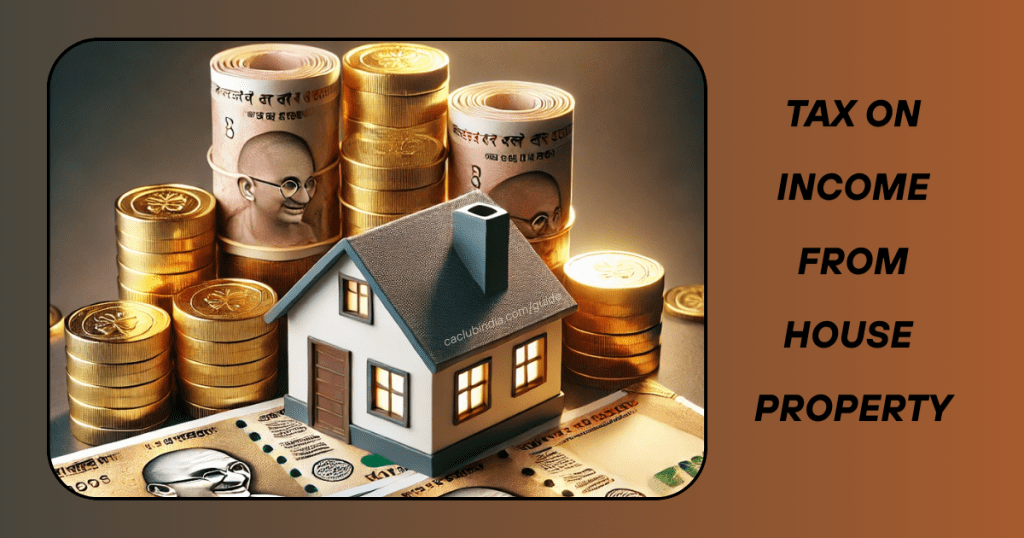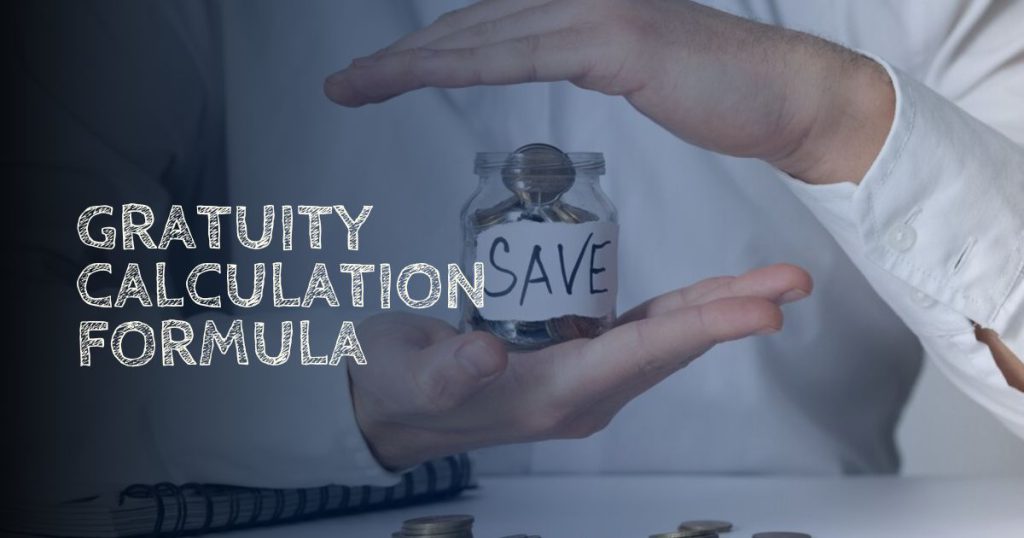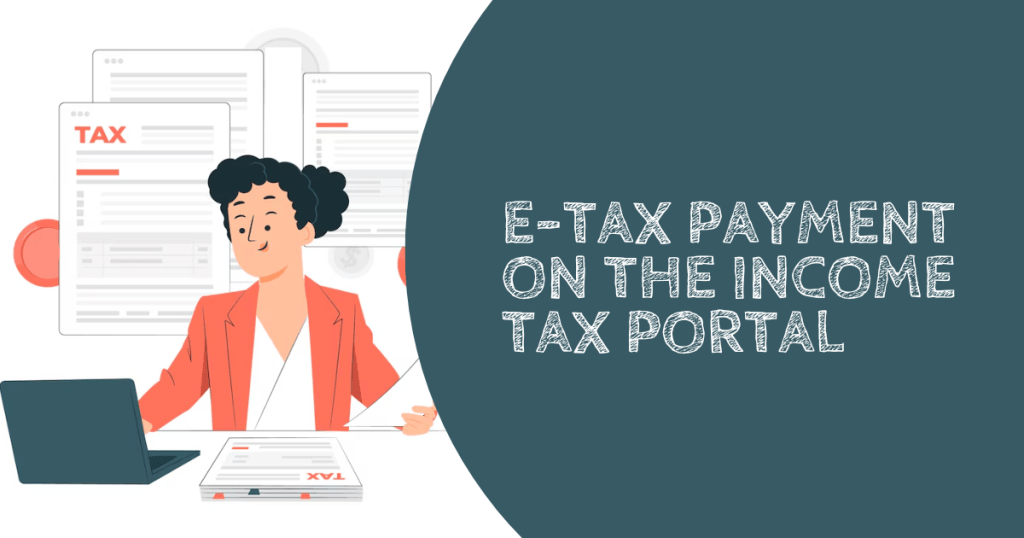Income is taxable under the head ‘house property’ if it arises from a property of any building or land appurtenant thereto. For the computation of income under this head, a house property is classified into three categories:
- Let-out – Rented out to tenants. The actual rent received is taxable after deductions.
- Self-occupied – Used for personal residence. The Gross Annual Value (GAV) is considered nil, and no rental income is taxable.
- Deemed let-out house property – If a person owns more than two self-occupied properties, the additional properties are treated as deemed let-out, and a notional rent based on market value is considered taxable.
Basis of Charge
Income from house property shall be taxable under this head if the following conditions are satisfied:
- The house property should consist of any building or land appurtenant thereto;
- The taxpayer should be the owner of the property;
- The house property should not be used for business or profession carried on by the taxpayer.
Computation Of Income From House Property
Income from a house property shall be determined in the following manner:
| Particulars | Amount |
| Gross Annual Value | ***** |
| Less: Municipal Taxes | ***** |
| Net Annual Value | ***** |
| Less: Standard deduction at 30% [Section 24(a)] | ***** |
| Less: Interest on borrowed capital [Section 24(b)] | ***** |
| Income from house property | ***** |
Tax Rules
The income from house property is computed based on its annual value. Various factors such as municipal valuation, fair rent, standard rent, and actual rent are considered to arrive at a yearly value.
Gross Annual Value
The Gross Annual Value of the house property shall be higher of the following:
- Expected rent, i.e., the sum for which the property might reasonably be expected to be let out from year to year. Expected rent shall be higher of municipal valuation or fair rent of the property, subject to maximum of standard rent;
- Rent actually received or receivable after excluding unrealized rent but before deducting loss due to vacancy
Out of sum computed above, any loss incurred due to vacancy in the house property shall be deducted and the remaining sum so computed shall be deemed to the gross annual value.
Tax Treatment
- Under Construction: No income till completion
- Multiple Properties: Only one SOP allowed
- Joint Loans: Both owners can claim deductions separately
Exemptions
Fully Exempt Properties
- Farm House: Used for agricultural purposes
- Trade Premises: Property used for business/profession
- Religious Properties: Buildings used for religious worship
- Diplomatic Properties: Buildings owned by foreign embassies
Partially Exempt Cases
- HRA Recipients: Can claim one self-occupied property as exempt
- Unoccupied Properties: Due to employment in another city
- Property Under Construction: No tax until completion certificate
- Vacant Property: Relief for genuine vacancy periods
Special Category Exemptions
- Local Authority Properties: Buildings owned by municipalities
- Charitable Institution Buildings: Used for charitable purposes
- Educational Institution Properties: Used for education
- Hospital Buildings: Used for medical treatment
Conditions for Exemption
| Documentation Required | Time Limits |
| {a} Property ownership proof {b} Usage certificates {c} Municipal approvals | {a} Claims within assessment year (b) Proper record maintenance |
Notable Points
- Exemption benefits must be claimed during tax filing
- Supporting documents should be maintained for 8 years
- Changes in property usage must be reported promptly
Deductions
Standard Deduction
30% of Net Annual Value
- Mandatory deduction for let-out properties
- No need to show actual expenses
- Not available for self-occupied properties
Municipal Taxes
Municipal taxes including service-taxes levied by any local authority in respect of house property is allowed as deduction, if:
- Taxes are borne by the owner; and
- Taxes are actually paid by him during the year.
Standard Deduction [Section 24(a)]
30% of net annual value of the house property is allowed as deduction if property is let-out during the previous year.
Interest on Borrowed Capital [Section 24(b)]
- Let-out property – Actual interest incurred on capital borrowed for the purpose of acquisition, construction, repairing, re-construction shall be allowed as deduction
- Self-occupied residential house property –
- Interest incurred on capital borrowed for the purpose of acquisition or construction of house property shall be allowed as deduction up to Rs. 2 lakhs. The deduction shall be allowed if capital is borrowed on or after 01-04-1999 and acquisition or construction of house property is completed within 5 years.
- Interest incurred on capital borrowed for the purpose of reconstruction, repairs or renewals of a house property shall be allowed as deduction up to Rs. 30,000.
Deduction for interest on borrowed capital shall be limited to Rs. 30,000 in following circumstances:
- If capital is borrowed before 01-04-1999 for the purpose of purchase or construction of a house property;
- If capital is borrowed on or after 01-04-1999 for the purpose of re-construction, repairs or renewals of a house property;
- If capital is borrowed on or after 01-04-1999 but construction of house property is not completed within five years from end of the previous year in which capital was borrowed.
Deduction for interest on housing loan (Section 80EE)
Deduction of up to Rs 50,000 shall be allowed to an Individual for interest payable on loan taken for the purpose of acquisition of a house property subject to following conditions:
- Loan has been sanctioned by Financial institution during the financial year 2016-17;
- The amount of loan sanctioned does not exceed Rs 35,00,000;
- The value of residential property does not exceed Rs 50,00,000;
- The assessee does not own any residential house property on the date of sanction of loan;
- Where deduction has been allowed under this section, no deduction shall be allowed in respect of such interest under any other provision.
Deduction for interest paid on housing loan taken for affordable housing (80EEA)
With an objective to provide an impetus to the ‘Housing for all’ initiative of the Government and to enable the home buyer to have low-cost funds at his disposal, the Finance (No. 2) Act, 2019 has inserted a new Section 80EEA under the Income-tax Act for those individuals who are not eligible to claim deduction under Section 80EE. An individual can claim deduction of up to Rs. 150,000 under Section 80EEA subject to following conditions:
- Loan should be sanctioned by the financial institution during the period beginning on 01-04-2019 and ending on the 31-03-2022;
- Stamp duty value of residential house property should not exceed Rs. 45 lakhs;
- The assessee should not own any residential house property on the date of sanction of loan; and
- The assessee should not be eligible to claim deduction under Section 80EE.
Hence, an individual who does not meet the criteria of Section 80EE shall now be eligible to claim deduction under Section 80EEA of up to Rs. 150,000 in addition to deduction under section 24(b). This deduction is available from Assessment Year 2020-21.
Co-owned Property
- Deductions available to each owner
- Proportionate to ownership share
- Separate claim in individual returns
Other Deductions
Unrealized Rent:
- Deductible if proven uncollectible
- Legal proceedings proof required
Vacancy Allowance:
- Reduction in annual value
- Proof of genuine vacancy needed
Examples
Example 1: Let-Out Property
| Particulars | Amount (₹) |
| Monthly Rent Received | 25,000 |
| Annual Rent (25,000 × 12) | 3,00,000 |
| Less: Municipal Taxes Paid | 20,000 |
| Net Annual Value (NAV) | 2,80,000 |
| Less: Standard Deduction (30% of NAV) | 84,000 |
| Less: Interest on Home Loan | 1,50,000 |
| Taxable Income from House Property | 46,000 |
Example 2: Self-Occupied Property
| Particulars | Amount (₹) |
| Annual Value | Nil |
| Less: Municipal Taxes | Not Applicable |
| Less: Standard Deduction | Not Applicable |
| Less: Interest on Home Loan | 2,00,000 |
| Taxable Income from House Property | (-2,00,000) |
Example 3: Multiple Properties
| Particulars | Property 1 (SOP) | Property 2 (LOP) |
| Annual Value | Nil | 4,00,000 |
| Less: Municipal Taxes | NA | 30,000 |
| Net Annual Value | Nil | 3,70,000 |
| Less: Standard Deduction | NA | 1,11,000 |
| Less: Interest | 1,50,000 | 2,00,000 |
| Income/Loss | (-1,50,000) | 59,000 |
Conclusion
Understanding the tax rules, deductions, and exemptions related to income from house property can significantly impact your tax liability. It is advisable to consult with a tax professional to optimize your tax planning strategy for FY 2024-25.
It’s important to keep precise records of all payments, such as municipal taxes and home loan interest, to support deduction claims. Seeking guidance from a tax professional is advised for tailored advice and to ensure adherence to all relevant regulations


